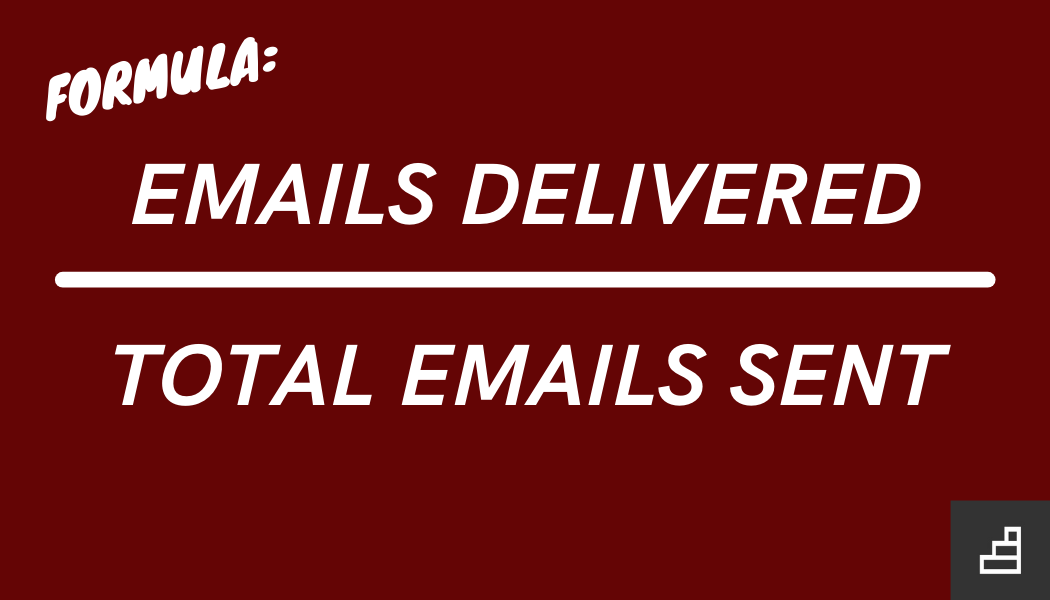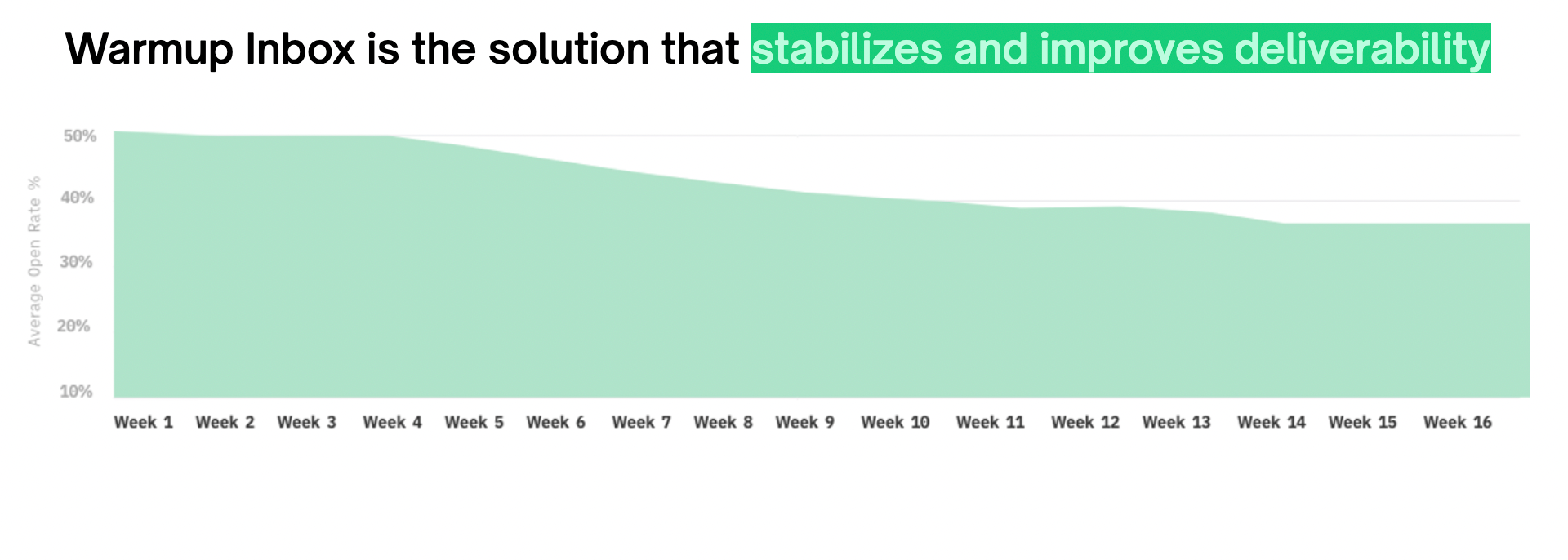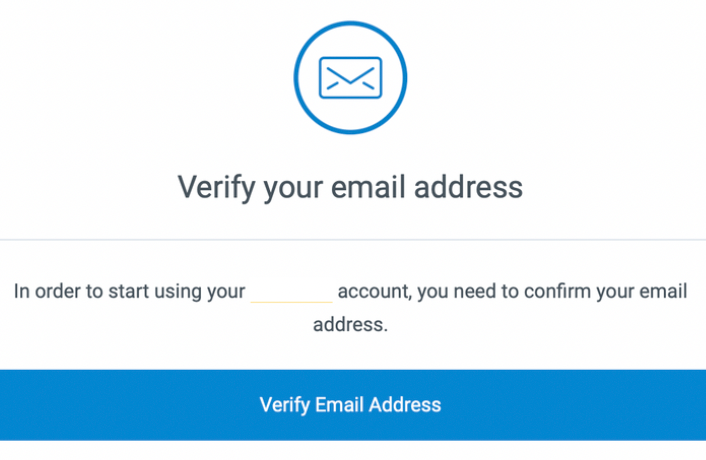
Email Deliverability Rates: Why They’re So Low & How to Save Them
Εvery email marketer’s goal is to get a newsletter delivered to 100% of recipients.
You would be surprised to know that about 20% of emails never make it to their intended targets' inboxes. (Source) To clarify, that doesn't mean the email landed in spam - that means they were never delivered in the first place. It seems absurd but the biggest problem seems to be that emails are not even getting there. That is exactly what email deliverability is all about.
We call email deliverability rates the success rate in having an email delivered to the recipients’ inboxes.
To find out the deliverability rate of your email marketing campaigns:

(Note that 95% and higher is considered to be a good deliverability rate.)
Nowadays, email providers are constantly coming up with new ways to keep spam messages out of their users’ inboxes. As spam keeps getting more clever, email clients are employing more restrictive measures. Whenever you send an email, email providers have to verify if it is legit and whether or not the message was actually sent from the alleged source.
This reason isn’t enough to explain low deliverability rates, though. The key explanation is that many senders don’t follow up with email deliverability best practices. In this article, we will explore all the aspects affecting your email deliverability rates while also presenting effective ways to enhance it.
Incorrect IP Allocation
When creating your email campaign, before anything else, you should focus on your IP allocation.
Your email deliverability is highly affected by the way you allocate your IP addresses.
Spammers usually try to send emails through different IPs, many of which don’t actually match the IP address displayed in the sent column. The internet service providers (ISPs) detect this error and then tend to block an entire range of IPs.
Surely you don’t want to face such a problem, so you must avoid owning several IP addresses. Make sure you authenticate your domain and email provider. This way you verify your brand’s identity and create a good IP reputation.
Another valuable method is to warm up your IP address by gradually increasing the number of emails sent through it. IP warming is considered essential in order to build a good reputation with internet providers. You should also be aware that most email marketing platforms, like Moosend, cover the IP warming process since they have many shared IPs for their clients and can take care of them for you.

Not Authenticating Property
Authenticating your emails through the appropriate protocols allows ISPs to recognize their legitimacy and increase email deliverability. Email authentication can be a confusing, technical process. Even experienced security professionals are intimidated when they set it up.
There are three basic authentication protocols that can help your team out:
- SPF
- DKIM
- DMARC
If you choose to put SPF and DKIM settings in place, you provide targeted inboxes with verified data to cross-reference with your emails and help ISPs check if your email is verified. This way no one can pretend to be you and commit fraud under your brand’s name.
Always keep in mind that an improper authentication setup prevents a healthy email deliverability rate, while a carefully planned authentication process can return much to your business in terms of investment.
Opting for a Single Opt-in Process Instead of Double
Almost everyone has at some point mistyped their email address; so will some of your subscribers while signing up to your mailing list. Email addresses containing errors can result in unwanted mix-ups and negative feedback. This is one of the reasons why your lists must be opt-in and preferably GDPR-compliant through the usage of a double opt-in tool.
A double opt-in process means that, after people sign up to a list or complete an order form on a website, they receive a confirmation email to confirm their subscription. Afterward, your brand will most likely have an engaged customer with a correct email address since they explicitly agreed to receive an email from you.
Double opt-in lists will - almost by default - get you better results compared to single opt-in ones. By sending to a more engaged and active list, you establish a more positive communication between you and your customers and build a great brand identity.

Lack of Communication with New Customers
As we analyzed above, it is important to build a strong, permission-based mailing list where your recipients have opted to receive your emails. However, maximizing the potential of your list and your recipients’ level of engagement might need more than just setting up a double opt-in process.
For instance, if someone signs up to receive emails from your brand and they don’t receive any for a long time, they will probably forget about you and why they signed up in the first place. In email deliverability terms, waiting too long to send your first email will destroy any chance you have of creating a good first impression on your newly added members. Why not benefit from some of the best welcome emails instead which will encourage your recipients to connect with your business from day one?
Failing to Monitor Blacklists
A high number of spam complaints might result in your IP or sending domain getting blacklisted. ISPs monitor such lists to determine which senders to block from their users’ inboxes. You can avoid blacklists by sending relevant content to recipients who have recently engaged with your business.
If you are having trouble getting your emails delivered, you may want to check DNS-based blacklists. These blacklists include every IP address that received a lot of spam complaints.
You should bear in mind that all emails sent out by such an address never reach inboxes. As you can tell, your email deliverability rates could drop dramatically if your brand name features on any of these blacklists.
Irrelevant or Spam-Flagging Subject Lines
When a recipient sees your email in their inbox, the subject line is what they first notice. A carefully thought newsletter subject line makes them want to open your email. However, a badly written one can be a huge turn-off.
In fact, 69% of email recipients tend to report emails as spam simply judging from their subject lines. (Source)
Quite often, issues with subject lines can be summarized into this:
- If your subject line makes your email look like spam, then people and the spam filters that ISPs use to protect them will most likely believe that it actually is.
- Certain clickbaity phrases might or might not make ISPs move your emails to the spam folder.
For the sake of your reputation though, it is best to avoid spam trigger words. Some examples are:
- like
- Free
- earn money easily
- click now

Also, reduce excessive use of punctuation, symbols, and special characters and use only when absolutely necessary.
Your subject lines should be created to match your newsletter content as well. An “RE” prefix when there is no record of any previous contact is misleading.
Similarly, if your email doesn’t require “urgent action” or your offer isn’t “just for today”, don’t include these words in your subject line. Keep them short and precise, as many email clients chop off subject lines with too many characters.
Be clear with your subscribers regarding the email content but don’t let them get bored.
Intriguing them through your subject line or highlighting the benefit of your email in a few words is key to success. Brands often take advantage of a sense of urgency by offering discounts for a limited time. Users may actually feel that they will miss out on something, therefore have the tendency to check out similar emails.
High Complaint Rates WILL Affect Email Deliverability Rates
There are many aspects to high complaint rates within your mailing lists. Some of them include irrelevant or annoying content; incorrect domain names; subscribers who haven’t consciously opted in or have received too many emails in a short time period; a difficult process for opting out. Every single one of these factors might irritate your recipients and lead to serious trouble.
If the email is unwanted, people will mark it as spam, and as a consequence, it is possible for all your emails to start going to the spam folder. A recipient marking an email as spam is the most negative signal to ISPs as regards the legitimacy of your email. Complaint rates above 0.2% are considered high and usually bring poor deliverability rates, given that for most mailbox providers, even a low spam rate can seriously damage your email deliverability rate.
Out-of-date Email Lists
While investing time and money to create a large database of email addresses is important, your mailing lists should first and foremost be clean and updated. Considering taking action with a list that you have built carefully from scratch and nurtured over a long time may be hard on you.
However, destroying your sender’s reputation by sending to people who never open your emails is worse. On top of that, you are actually paying for doing so.
Old mailing lists contain outdated and probably uninterested recipients. To avoid that, an effective practice is to go through your mailing lists every six months. Look for subscribers who don't open your emails and delete their email addresses.
Also, check for bogus addresses, typos, or duplicates. As an email sender, when you keep similar addresses in your lists, your emails may bounce or go to the wrong inbox.
Over the last years, ISPs have moved their attention from traditional spam filters to user engagement, meaning how your subscribers interact with your newsletters. Through this process, they determine whether your emails should go to a recipient’s inbox or in the spam folder. If your sending address and domain are flagged as spam and lack positive engagement, even recipients who want to hear from your business will stop receiving your emails.
To take it one step further in terms of subscriber engagement, make sure to give your subscribers exactly what they are looking for by segmenting them into different groups.

Once you have set your list segmentation criteria, you can easily tailor your content to suit the needs and interests of each segment created.
Making it Hard to Unsubscribe
An unsubscribe link must be included in every email you send. No exceptions!!!

It’s also highly recommended to make it easy for your recipients to find. Hiding your unsubscribe link in a text with a big font size will frustrate your recipients in case they wish to remove themselves from your mailing list.
Make your unsubscribe link clear and visible and set it apart from all other information so that your users can effortlessly find it and click on it. Better yet, add a permission reminder text close to it to remind subscribers where exactly they gave you their permission.
Always remember that the more difficult you make it for them to unsubscribe, the more likely they will eventually mark your email as spam. An unengaged recipient deciding to unsubscribe is always preferable over a spam complaint. Moreover, all your active recipients will appreciate your clarity and consider your brand to be trustworthy.
Conclusion
Maintaining a high email deliverability rate is all about taking necessary measures needed so that your emails land in the targeted inbox. To make sure that your emails are being delivered to your leads and that they are actually engaged with your content, you need to show ISPs that your emails are not forged.
Ensure that you are sending your emails to real addresses and interested recipients and create positive interactions between you and your customer base. These customers will then interact with your brand and keep your email deliverability rates high and your reputation growing.
Regardless of the industry that your business belongs to, email deliverability is a metric worth keeping track of. It is true that you can’t build it in a day but you can damage it in the blink of an eye when you choose to send an email that doesn’t really bring your brand’s A-game.
Guest Post Written by:
Maria Fintanidou - Copywriter for Moosend
Newsletter
Join the newsletter to receive the latest updates in your inbox.





